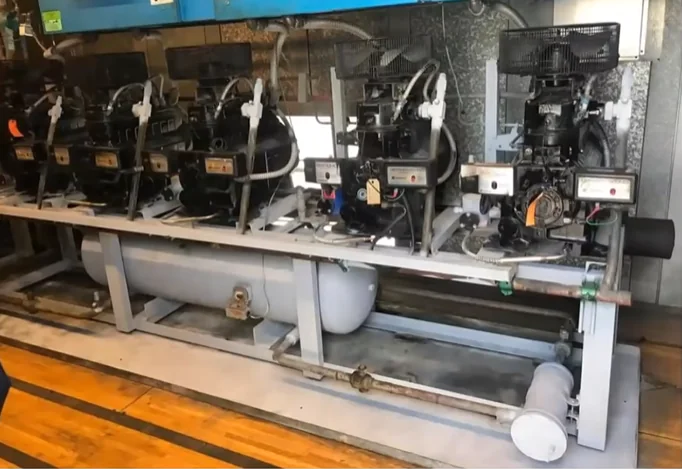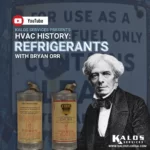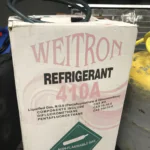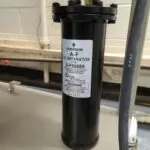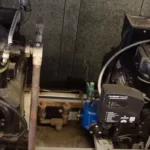I’d bet that almost 100% of the people reading this article have been to a supermarket at least once. Many of us probably visit the supermarket weekly to stock up on groceries! When you think about it, supermarkets are actually kind of incredible; they have to keep so much fresh (or frozen) food cold both on the sales floor and in the back. Supermarkets manage to keep so many refrigerators active because they use a specific kind of refrigeration: parallel rack refrigeration.
Parallel rack refrigeration systems are very large and contain multiple compressors piped together in parallel. All of the coolers attached to the rack system share the same refrigerant and oil charge, so a parallel rack system is an efficient way to keep several units cold at once. These refrigeration systems are so large that they typically require their own motor rooms, which are usually located on the rooftops of grocery stores.
We’re going to share a few secrets about parallel rack refrigeration and show you where and how the magic happens. We’ll also cover some special safety concerns with parallel rack motor rooms.
Table of Contents
PARALLEL RACK ANATOMY
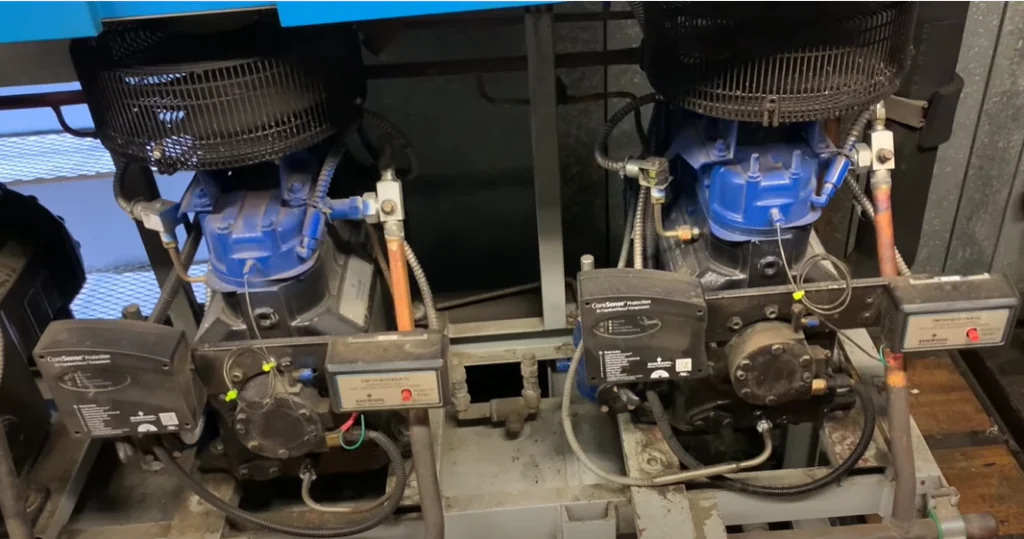
We can see a few different types of rack refrigeration systems, including direct expansion (DX) and carbon dioxide (CO2) systems. This time, we’re going to focus on the DX rack refrigeration system.
Like most other compression-refrigeration systems, parallel rack refrigerators operate on a refrigeration cycle. In other words, they use refrigerant to absorb heat, compress that refrigerant, reject heat from the refrigerant, and drop the refrigerant pressure to restart the cycle.
However, parallel racks may have several evaporators and multiple compressors piped together. All of the compressors are tied into the same piping system, so they all discharge hot, high-pressure gas into a discharge header. That discharge header then leads into a common discharge line that goes to the condenser. However, some of the discharge gas may tie into the A/C system for reheat purposes.
From the condenser, the refrigerant travels to the liquid receiver. That receiver can store liquid refrigerant when it’s not actively moving through the system. Then, the refrigerant passes through a filter-drier. It then goes through the liquid line to the remote liquid header. That’s where the evaporators connect the liquid header to the suction header.
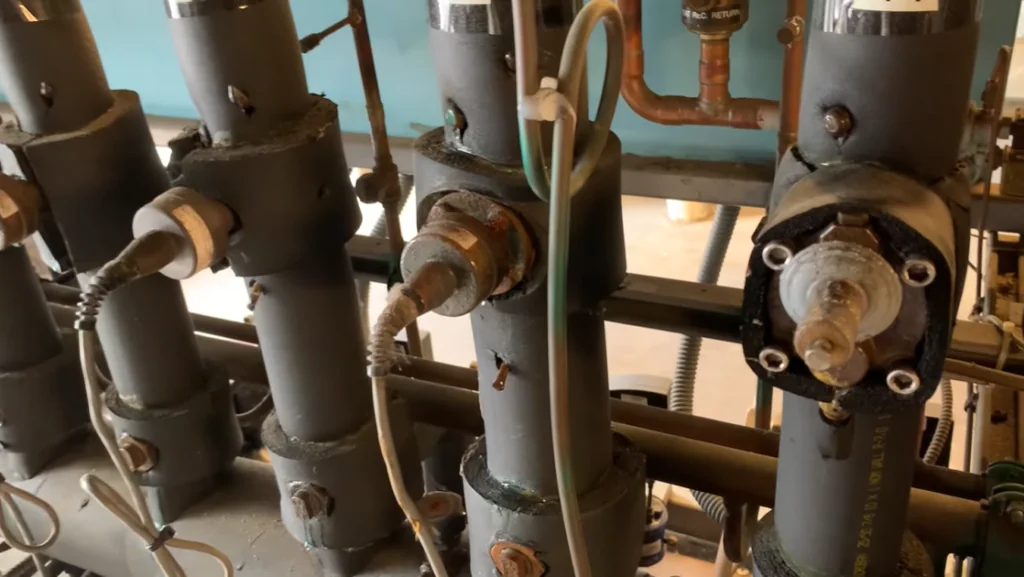
Each evaporator has a pressure-regulating valve, which can help the system achieve near-100% runtime between defrosts. The evaporators allow the refrigerant to absorb heat from the coolers below, and the refrigerant turns into a gas. From there, the gas moves to the suction header, through the suction line, and back to the compressors.
OIL SYSTEM
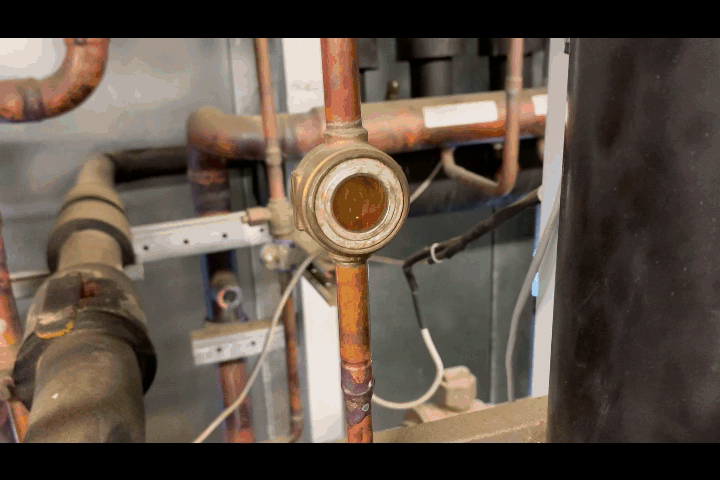
Rack refrigerators also use oil to keep the compressor lubricated. Without oil, the bearings would wear out very quickly, leading to compressor failure and heavy replacement expenses.
To keep the compressor lubricated, oil moves with the refrigerant through the compressor and separates from it again in the discharge line. Discharge gas carries oil and refrigerant to the oil separator, which removes the oil from the refrigerant and sends it back to an oil reservoir for storage. When the oil goes back into the piping, it leaves the reservoir, passes through an oil filter, and goes into one of the oil regulators. The oil regulators feed oil into the compressor, which allows the bearings to stay slick and prevent excess wear.
These oil components have sight glasses, which are little windows into the system that let you see the oil inside the piping and parts.
ELECTRICAL COMPONENTS AND CONTROLS
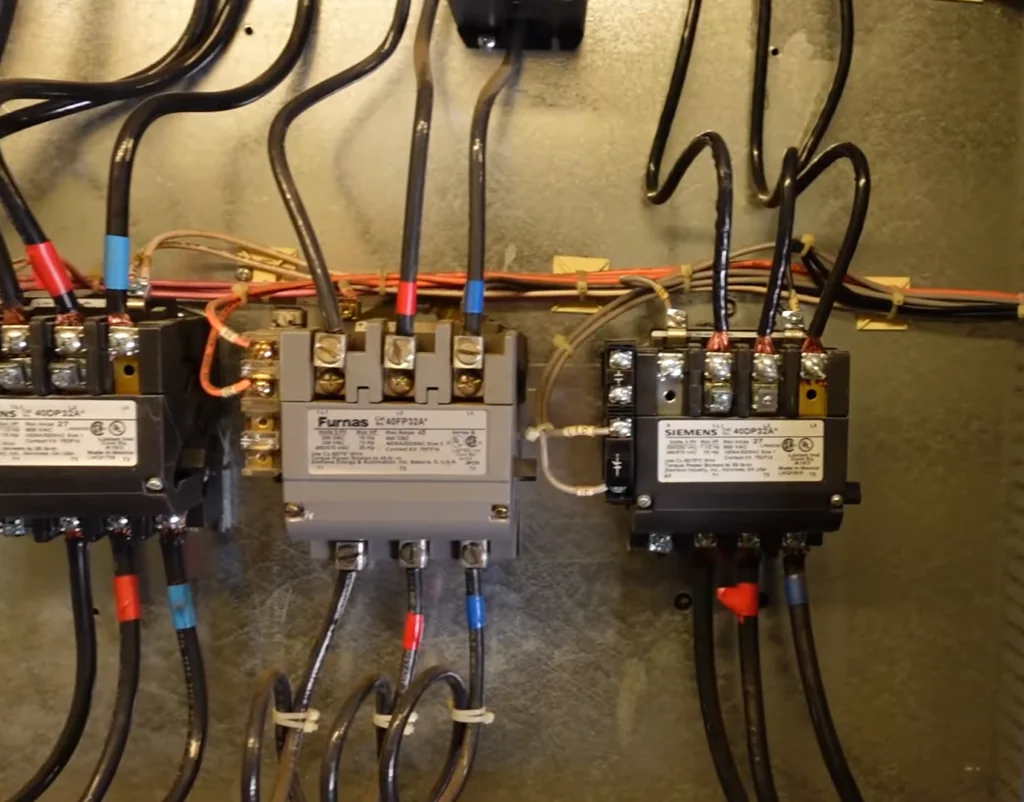
To keep the compressors all running, each rack will have an electrical panel with the compressor contactors. The contactors are just the places where the wiring comes together.
Each compressor will have its own breaker, and that’s important because one compressor can shut down without affecting the others. If all compressors were on a single breaker, then one compressor shutdown or failure would cause the entire rack to go down.
The rack will usually also have a controller. Controllers can take inputs and turn those into signals for the relay board inside the panel, which can control vital functions like defrost. We likely won’t use every single function on a relay board; those boards need to be programmed to fit the rack and its parts. There may also be a motor saver near the controller.
MOTOR ROOM HAZARDS
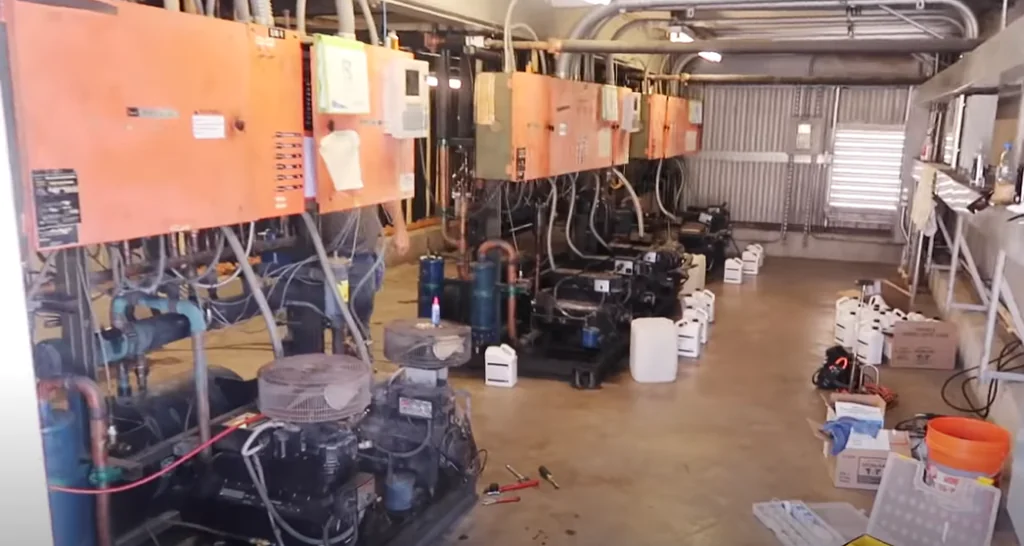
Motor rooms are generally on building rooftops, and they may contain one or multiple refrigeration racks.
Because motor rooms are secluded areas, some employees may be tempted to get out of work by taking breaks in those motor rooms. Our techs occasionally see litter like chip bags in motor rooms, which indicates that people may have been hanging out there when they really shouldn’t have been. That’s actually very concerning to us because motor rooms may have other hazards, including exhaust fans and electrical components. With so much refrigerant and electrical power in a single confined space, it’s no surprise that motor rooms can be dangerous places. It’s best that facilities managers inform their employees of the following risks of injury or death:
ELECTRICAL HAZARDS

NOBODY except authorized contractors should touch electrical components. Only those who have received proper training should open electrical panels and touch the parts inside the panels. There should also never be any open wiring in a motor room. If anybody works on a refrigeration unit and needs to disconnect the power, they should lock or tag out the equipment at the power supply so that nobody can start the equipment while it is being worked on.
RESPIRATORY HAZARDS
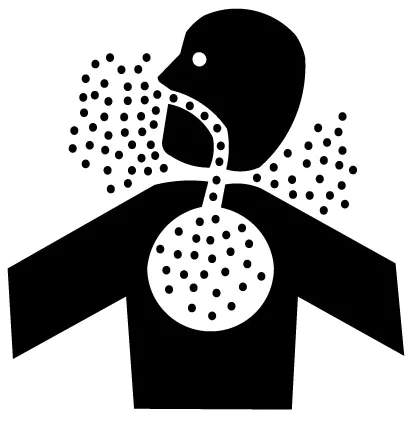
Refrigerant leakage is also another potential concern, as we can inhale it and damage our bodies. Normally, refrigerant leakage outdoors isn’t a big deal when it comes to our health; we’re surrounded by fresh air, so a little bit of refrigerant won’t stay near us in large amounts for long. However, motor rooms are small, and rack refrigeration systems carry a lot of refrigerant. That refrigerant can displace oxygen very quickly if it were to leak into a confined space like the motor room. So, everyone who enters the motor room should know the exit and watch out for signs of refrigerant inhalation. Some symptoms of refrigerant poisoning include dizziness, headache, and nausea.
For maximum safety, facilities managers would be wise to post signage warning employees of the hazards present in the motor room. (And unauthorized employees should stay out of motor rooms altogether.)
BEHIND THE SCENES
Kalos Services is also an industry leader in HVAC and refrigeration education through the global training resource, HVAC School. Kalos technician Eric Mele has made several educational videos about commercial refrigeration on the HVAC School YouTube channel, including a tour of a DX parallel rack motor room:
(Note: The motor room is a loud place. Closed captioning is available by pressing the “CC” button.)
Learn more about our commercial refrigeration services HERE.

